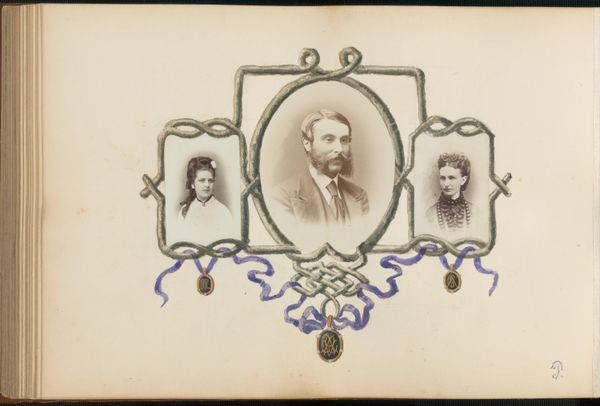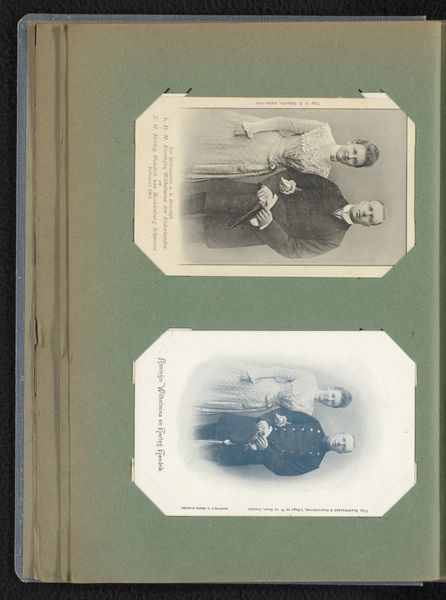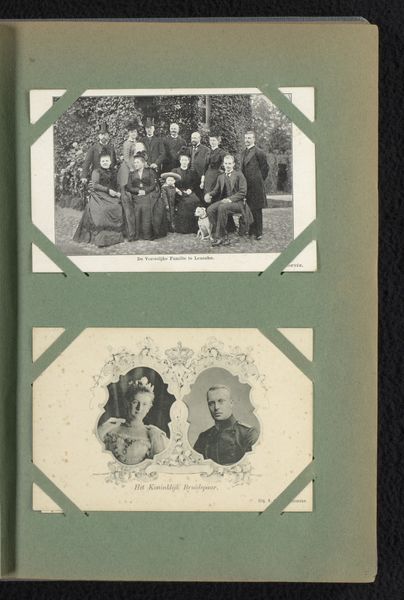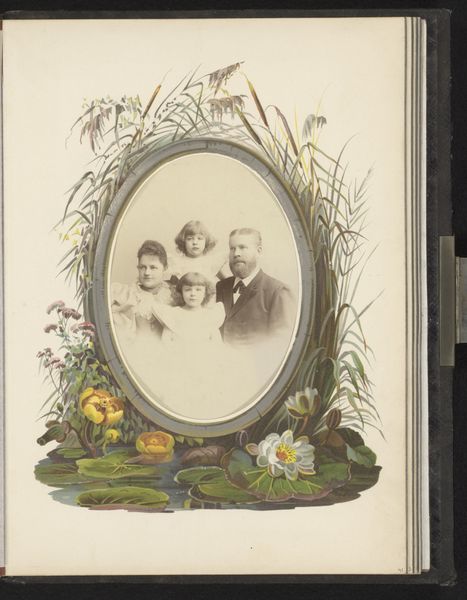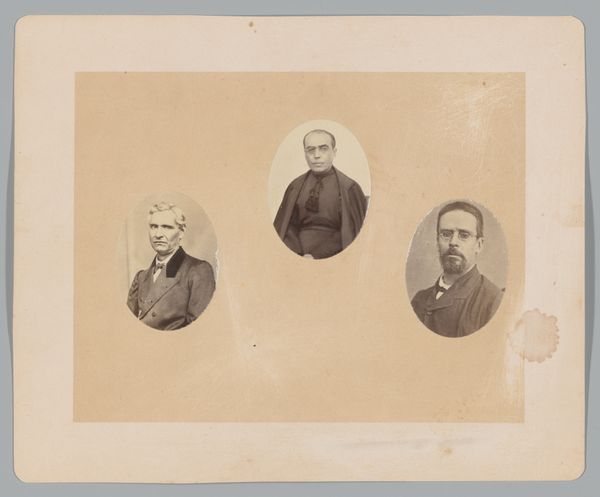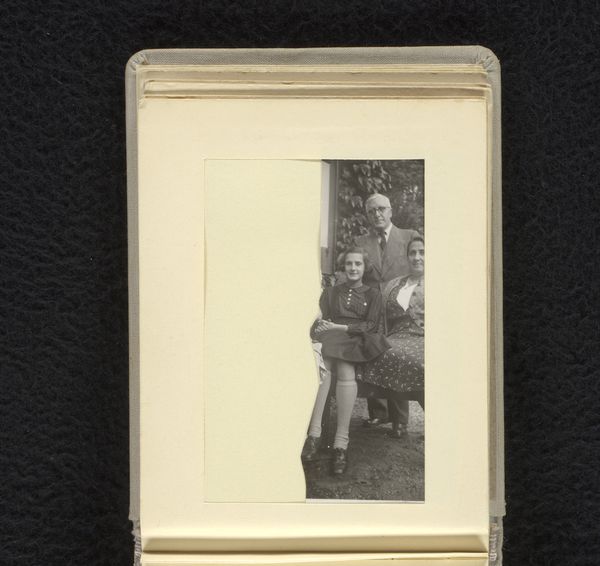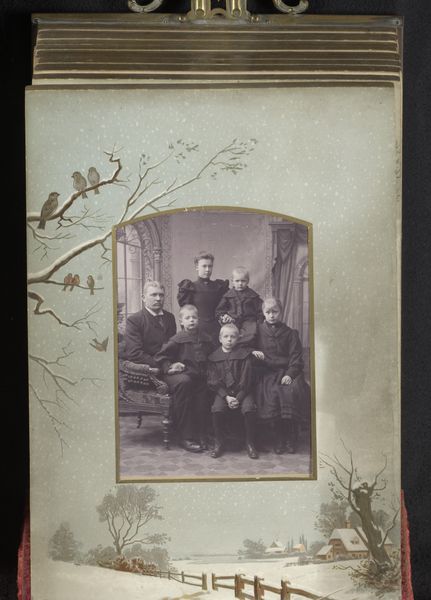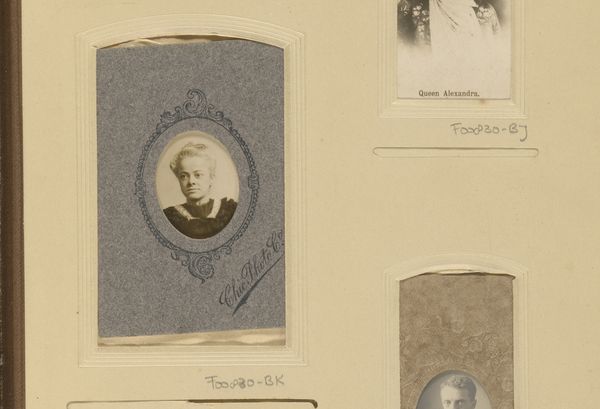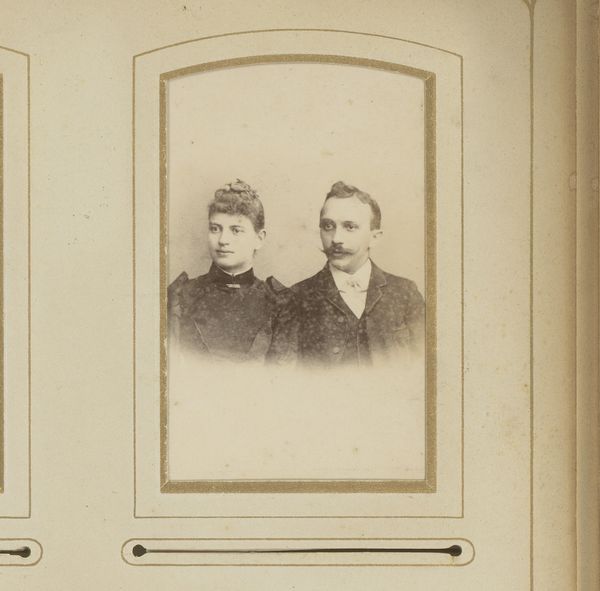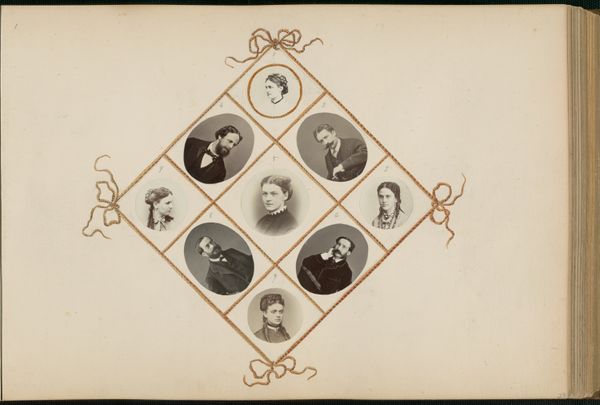
print, photography
# print
#
photography
#
group-portraits
#
genre-painting
#
decorative-art
Dimensions: height 351 mm, width 460 mm
Copyright: Rijks Museum: Open Domain
Curator: What we have here is a composite portrait titled "Viergeneratieportret met vier onbekende vrouwen", or "Four-Generation Portrait with Four Unknown Women", possibly created between 1901 and 1912 by the studio of Samhaber & Ennslinger. The materials involve photography combined with printmaking techniques. What's your first impression? Editor: It’s melancholy. The sepia tones lend a wistful air, and the faded appearance suggests the passage of time, remembrance. The different photographs within the larger frame seem to point to generational distance, yet the piece intends to unify them, hold them together in the visual field. Curator: Indeed, these photographic elements evoke a kind of Victorian sentimentality surrounding family and legacy. The portraits, arranged to illustrate lineage, carry specific iconographic weight. Notice how the eldest woman occupies a prominent, almost regal, oval frame, which symbolizes continuity through maternal lineage. Editor: This notion of continuity feels crucial in understanding the image’s political context. Within patriarchal structures, lineage and inherited social status were paramount. Focusing on a matriarchal connection disrupts the standard paternal inheritance narratives. The emphasis seems to challenge prevailing power structures by asserting female significance within these social dynamics. Curator: Exactly. Even the decorative flourishes surrounding the portraits are worth noting. They signify an aspiration towards refinement, towards placing these ordinary women into a realm of enduring importance. The lettering with the German phrase, though slightly faded, likely serves as a memorial dedication, connecting earthly existence to something eternal. It reads: "Fortunately happily named is the departed life's last hour; Strike in its children's middle such leaving doesn't mean death!" Editor: A poetic, idealized concept of mortality—recasting loss as a seamless continuation. Perhaps even a quiet act of resistance against the precarity women face in male dominated social and familial frameworks. Were their voices otherwise overlooked? Did this commissioned work help establish their presence in a more tangible, long lasting record? Curator: Possibly. This act of remembrance immortalizes and perhaps elevates these women to the symbolic status of cultural guardians, shaping narratives about familial heritage, as it reflects generational shifts in visual culture, adapting artistic forms to reflect changing societal values. Editor: In reflecting on its purpose, it feels revolutionary to present these women outside established patriarchal inheritance and to capture a moment of intersectional cultural expression from that era. Thank you for shining a light on these previously overlooked narratives!
Comments
No comments
Be the first to comment and join the conversation on the ultimate creative platform.

